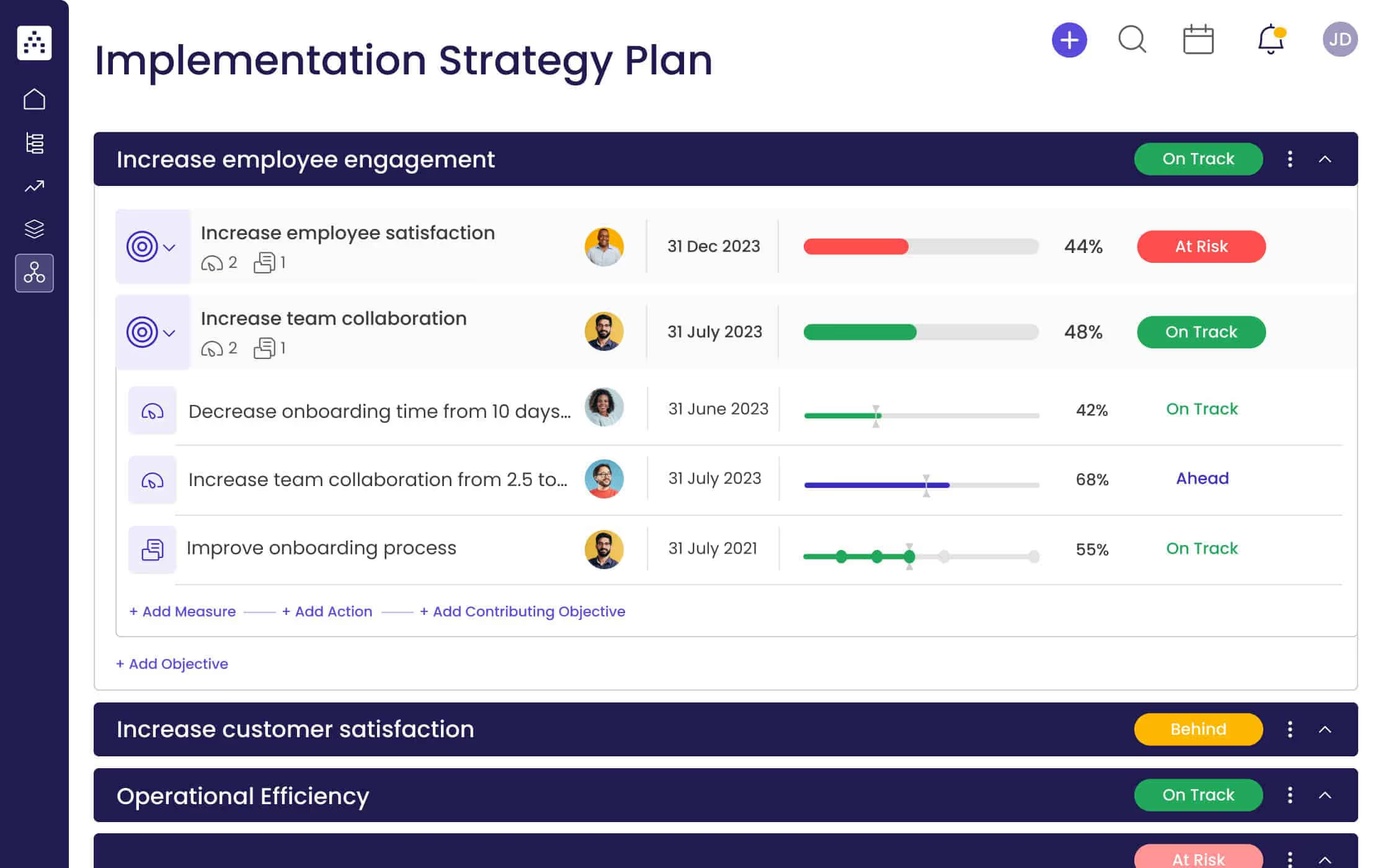What is an Implementation Strategy?
An implementation strategy is a plan of action designed to achieve specific goals. It typically involves activities and projects that must be carried out in order to ensure that the desired outcome is achieved. The implementation strategy outlines the steps that must be taken in order to successfuly execute the strategy.
What's included in this Implementation Strategy template?
- 3 focus areas
- 6 objectives
- 6 projects
- 6 KPIs
Each focus area has its own objectives, projects, and KPIs to ensure that the strategy is comprehensive and effective.
Who is the Implementation Strategy template for?
This Implementation Strategy template is designed for organizations of all sizes and industries that need to execute their strategies across different business units and teams. The template will provide a roadmap for businesses to follow in order to achieve their desired goals. It can be used to develop clear objectives, measurable targets, and actionable projects that will help to bring the strategy to life.
1. Define clear examples of your focus areas
The first step in developing an Implementation Strategy is to identify your focus areas. These are the main areas of the business that you want to focus on and improve. Examples of focus areas include increasing employee engagement, increasing customer satisfaction, and increasing operational efficiency.
2. Think about the objectives that could fall under that focus area
Once the focus areas have been identified, you need to think about the objectives that could fall under each focus area. These objectives should be specific, measurable, and achievable. For example, under the focus area of increasing employee engagement, you could set an objective of increasing employee satisfaction.
Examples of some objectives for the focus area of Increase employee engagement could be: Increase employee satisfaction, and Increase team collaboration.
3. Set measurable targets (KPIs) to tackle the objective
Once the objectives have been identified, you need to set measurable targets (also known as key performance indicators, or KPIs). These targets should be specific, measurable, and achievable. They should also be aligned with the objective. For example, if the objective is to increase employee satisfaction, the target may be to decrease onboarding time from 10 days to 5 days.
4. Implement related projects to achieve the KPIs
Once the KPIs have been identified, you need to implement related projects to achieve these goals. These projects should be designed to move the needle on the target. For example, to achieve the target of decreasing onboarding time, you may need to improve the onboarding process.
5. Utilize Cascade Strategy Execution Platform to see faster results from your strategy
The Cascade Strategy Execution Platform is the perfect tool to help you quickly and easily implement your strategy. It provides an intuitive interface where you can track and measure your progress, set deadlines, and assign objectives and projects. With Cascade, you can ensure that your strategy is executed in the most efficient and effective manner possible.


